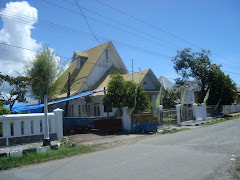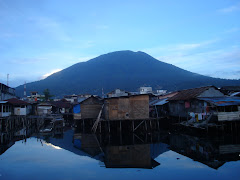Moluccas or Maluku (Indonesian language) is a cluster of about one thousand islands totaling for about 74,530 square kilometers, forming part of the Melanesian Archipelago in eastern Indonesia near New Guinea. The region is divided into two provinces, Maluku with its capital in Ambon, and North Maluku with its capital in Ternate. The islands of North Maluku Province are: Ternate (main island), Bacan, Halmahera (the largest), Morotai, Obi, Sula, and Tidore. The islands of Maluku Province are: Ambon (main island), Aru, Babar, Banda, Buru, Kai, Kisar, Leti, Seram, Tanimbar, and Wetar. Its approximately 1000 islands support a population of less than 1.7 million people. The main means transportation is air and sea, which link the islands together.
Most of the islands are mountainous, some with active volcanoes, and enjoy a wet climate. The vegetation of the small and narrow islands, encompassed by the sea, is very luxuriant; including rainforests, sago, rice, and the famous spices--nutmeg, cloves and mace, among others.

.jpg)


.jpg)
.jpg)

